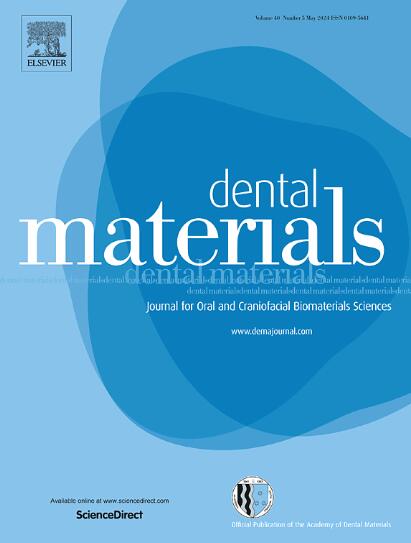Guidance on the assessment of biocompatibility of biomaterials: Fundamentals and testing considerations
IF 4.6
1区 医学
Q1 DENTISTRY, ORAL SURGERY & MEDICINE
引用次数: 0
Abstract
Background
Assessing the biocompatibility of materials is crucial for ensuring the safety and well-being of patients by preventing undesirable, toxic, immune, or allergic reactions, and ensuring that materials remain functional over time without triggering adverse reactions. To ensure a comprehensive assessment, planning tests that carefully consider the intended application and potential exposure scenarios for selecting relevant assays, cell types, and testing parameters is essential. Moreover, characterizing the composition and properties of biomaterials allows for a more accurate understanding of test outcomes and the identification of factors contributing to cytotoxicity. Precise reporting of methodology and results facilitates research reproducibility and understanding of the findings by the scientific community, regulatory agencies, healthcare providers, and the general public.
Aims
This article aims to provide an overview of the key concepts associated with evaluating the biocompatibility of biomaterials while also offering practical guidance on cellular principles, testing methodologies, and biological assays that can support in the planning, execution, and reporting of biocompatibility testing.
生物材料生物兼容性评估指南:基本原理和测试注意事项。
背景:评估材料的生物相容性对于确保患者的安全和福祉至关重要,因为它可以防止不良、毒性、免疫或过敏反应,并确保材料长期保持功能而不会引发不良反应。为确保进行全面评估,在规划测试时必须仔细考虑预期应用和潜在暴露情况,以选择相关检测方法、细胞类型和测试参数。此外,对生物材料的成分和特性进行表征可以更准确地了解测试结果,并确定导致细胞毒性的因素。目的:本文旨在概述与评估生物材料生物相容性相关的关键概念,同时就细胞原理、测试方法和生物检测提供实用指导,为生物相容性测试的规划、执行和报告提供支持。
本文章由计算机程序翻译,如有差异,请以英文原文为准。
求助全文
约1分钟内获得全文
求助全文
来源期刊

Dental Materials
工程技术-材料科学:生物材料
CiteScore
9.80
自引率
10.00%
发文量
290
审稿时长
67 days
期刊介绍:
Dental Materials publishes original research, review articles, and short communications.
Academy of Dental Materials members click here to register for free access to Dental Materials online.
The principal aim of Dental Materials is to promote rapid communication of scientific information between academia, industry, and the dental practitioner. Original Manuscripts on clinical and laboratory research of basic and applied character which focus on the properties or performance of dental materials or the reaction of host tissues to materials are given priority publication. Other acceptable topics include application technology in clinical dentistry and dental laboratory technology.
Comprehensive reviews and editorial commentaries on pertinent subjects will be considered.
 求助内容:
求助内容: 应助结果提醒方式:
应助结果提醒方式:


